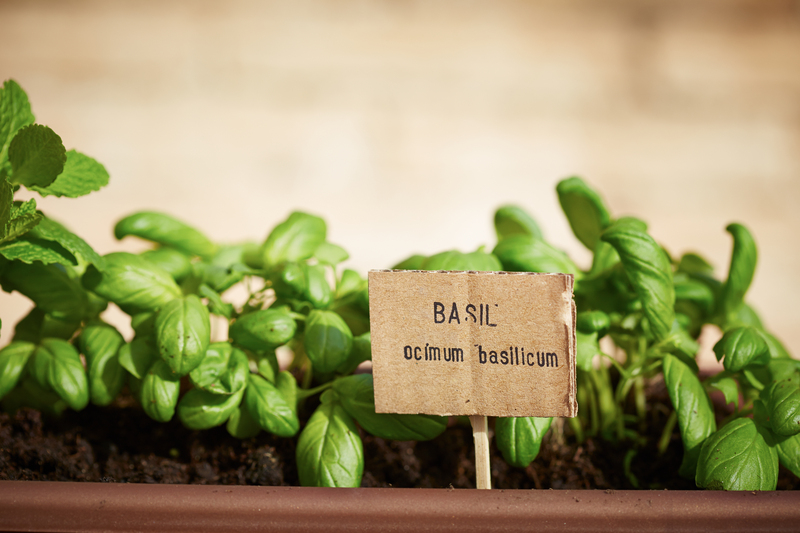Aesthetic Hedge Trimming: Techniques for Eye-Catching Geometry
Posted on 15/09/2025
Aesthetic Hedge Trimming: Techniques for Eye-Catching Geometry
Urban landscapes, suburban gardens, and manicured parks often boast a striking aesthetic hedge trimming display. With lush greens shaped into geometric masterpieces, beauty meets precision in the world of creative garden design. If you're eager to elevate your outdoor space with eye-catching geometric hedges, understanding the art and science of hedge trimming is essential. In this comprehensive guide, we unlock the secrets to sculpting hedges into stunning geometric shapes--from basic principles to advanced techniques and aftercare tips.

Why Geometric Aesthetics Matter in Hedge Trimming
The geometry of trimmed hedges is not merely decorative; it plays a vital role in garden architecture. Sharp lines, elegant curves, and repetitive patterns create a sense of order and sophistication, enhancing both small urban gardens and vast landscapes.
- Visual Interest: Geometric shapes provide focal points and visual rhythm.
- Functional Delimitation: Neat hedge lines define spaces, pathways, and borders.
- Year-round Appeal: Even out of bloom, structured hedges offer perennial allure.
- Customizable Designs: From cones and spheres to complex topiary, geometric trimming allows unlimited creativity.
The Principles of Eye-Catching Geometry in Hedge Trimming
To achieve the perfect geometric hedge trim, it's crucial to master some key horticultural principles:
- Symmetry & Balance: Symmetrical geometry ensures every angle is visually harmonious.
- Proportion: Each hedge shape should be proportionate to its surroundings for natural integration.
- Repetition and Rhythm: Repeating patterns enhance the sense of consistency throughout the landscape.
- Perspective: Hedges should be trimmed to complement the sightlines of your garden or property.
Best Plants for Aesthetic Hedge Trimming
Not all shrubs are suitable for shaping into geometric forms. Selecting the right species maximizes health and durability while simplifying maintenance.
- Boxwood (Buxus): Renowned for its dense foliage, boxwood is the classic choice for shaping and aesthetic geometry.
- Yew (Taxus baccata): Flexible and robust, yew is ideal for both straight lines and complex forms.
- Privet (Ligustrum): Fast-growing, dense, and easily shaped for both formal and informal designs.
- Holly (Ilex crenata): Small leaves and strong structure make holly excellent for aesthetic hedge shaping.
- Japanese Holly (Ilex crenata): Similar to boxwood but more resistant to disease in some climates.
Tip: Look for shrubs with small, closely packed leaves and responsive new growth for precise geometric trims.
Essential Tools for Geometric Hedge Shaping
- Hedge Shears: Preferably with long, straight blades for crisp lines.
- Topiary Shears: For detailed work and fine geometry on small-leaved plants.
- String and Stakes: To mark straight lines or patterns before you cut.
- Spirit Level or Measuring Tape: Ensures accuracy and uniformity.
- Shaping Frames or Templates: Reusable wire frames for spheres, cones, or more intricate shapes.
- Ladders or Platforms: For safely accessing tall hedges.
A well-maintained tool kit ensures each cut is clean, reducing plant stress and promoting healthy growth.
Step-by-Step Techniques for Geometric Hedge Trimming
1. Planning and Marking
- Visualize the Design: Consider the hedge in the context of your overall garden layout.
- Sketch or Model: Draw the intended geometric shape for reference.
- Mark Guidelines: Use string, stakes, or chalk lines to define edges and curves.
2. The Initial Cut
- Remove Large Overgrowth: Use loppers for thick branches before shaping.
- Outline the Silhouette: Start forming the crude shape along your marked lines.
- Work Top to Bottom: Start at a higher point; trimmings will fall and avoid re-cutting lower sections.
3. Refining the Shape
- Straight Edges: Follow taut strings, using long-armed shears for a crisp line.
- Curved Forms: Use topiary shears and move slowly, checking from different angles for symmetry.
- Step Back for Perspective: Frequently assess your work from a distance to ensure geometric uniformity.
4. Smoothing and Detailing
- Prune Finer Twigs: For a smooth surface, lightly shear delicate new growth.
- Trim Base Wider: Ensure the hedge bottom is slightly wider than the top for better light penetration and even growth--a key to long-term geometric fullness.
- Finish with Clean Lines: Use sharp tools to neaten edges and surfaces.
Popular Hedge Geometry Styles
Straight Lines and Angles
- Rectilinear Hedges: Perfect for formal parterres and boundaries.
- Corner Turns: Use stakes at junctions; connect with string for flawless right angles.
- Tiered Hedges: Step down in levels for a dramatic, modern garden effect.
Curves and Arches
- Circles and Ovals: Ideal as focal points or for softening hardscapes.
- Rounded Tunnel Hedges: Create garden "doorways" using wire frames for uniformity.
- Rolling Waves: Blend curved sections for a flowing, organic geometry.
Complex Topiary and Art Forms
- Spirals: Start with a cone, mark a spiral guideline, and trim gradually to shape.
- Multilevel Sculptures: Layered domes, cubes, and spheres for a living art installation.
- Themed Figures: Animals, letters, or abstract forms (requires frames and advanced skill).
Seasonal Timing for Aesthetic Hedge Trimming
- Late Spring/Early Summer: Best time for formative geometric trimming; new growth recovers quickly.
- Early Autumn: A light trim after peak growth ensures clean lines through winter.
- Avoid Frost Periods: Freshly cut hedges are sensitive to cold and may suffer damage.
- Conifer Hedges: Prune earlier in summer, as late cuts don't regrow as well.
Care and Maintenance After Trimming
- Water Regularly: Especially after a major trim, as plants stress and heal.
- Mulch and Fertilize: Apply slow-release fertilizer post-trim; mulch retains moisture and discourages weeds.
- Monitor for Pests: Open wounds can attract disease and insects--inspect and treat promptly.
- Touch-Up Trims: Fast growers may need small trims every few weeks to maintain sharp geometry.
Healthy, well-maintained hedges retain aesthetic sharpness and fullness throughout the growing season.
Common Mistakes and How to Avoid Them
- Overcutting: Excessive pruning can leave hedges sparse; always trim less than you think is needed, then reassess.
- Neglecting the Lower Growth: Ensure sunlight reaches the base by keeping it slightly wider than the top.
- Poor Tool Maintenance: Dull blades tear rather than cut, promoting disease and uneven finishes.
- Ignoring Sightlines: Always check symmetry and lines from multiple vantage points around the garden.
Inspiration: Famous Examples of Geometric Hedge Trimming
Some of the world's most iconic gardens showcase advanced geometric hedge trimming techniques. Draw ideas from:
- Versailles, France: Intricate parterres and symmetrical shapes frame the palace gardens.
- Hampton Court, UK: Maze-like yew hedges and delicately sculpted topiaries.
- Villa d'Este, Italy: Creative uses of curves and tiered shaping alongside water features.
- Longwood Gardens, USA: Modern interpretations with rolling geometric forms.

Expert Tips for Perfect Geometric Hedge Trimming
- Be patient: Achieving precise aesthetic geometry takes time--grow shrubs to the right size before shaping.
- Start with Simple Shapes: Master cubes, cones, and spheres before attempting spirals or figures.
- Practice Regular Observation: Watch how your hedge responds to trimming and adjust future practices accordingly.
- Invest in Quality Tools: The difference between average and extraordinary geometry often lies in clean, even cuts by sharp shears.
- Use Templates and Guides: Especially useful for repeat patterns and curves that require uniformity.
- Protect New Cuts: After shaping, water deeply and monitor for sun or wind damage.
Conclusion: Transforming Your Landscape with Aesthetic Hedge Trimming
Mastering the art of aesthetic hedge trimming unlocks unlimited potential for transforming your garden into a striking landscape of shapes and symmetry. From formal sharp-lined hedges to whimsical topiary spirals, the power of geometry in garden design crafts beauty that endures the seasons. With practice, quality tools, and an eye for proportion, you can create eye-catching geometric hedges that inspire admiration and add lasting value to your home or estate.
Remember: Every great geometric hedge started with a single cut--yours might be next.
Stay creative, and let your personal style guide every hedge trimming session. Beautiful, geometric hedges await!

